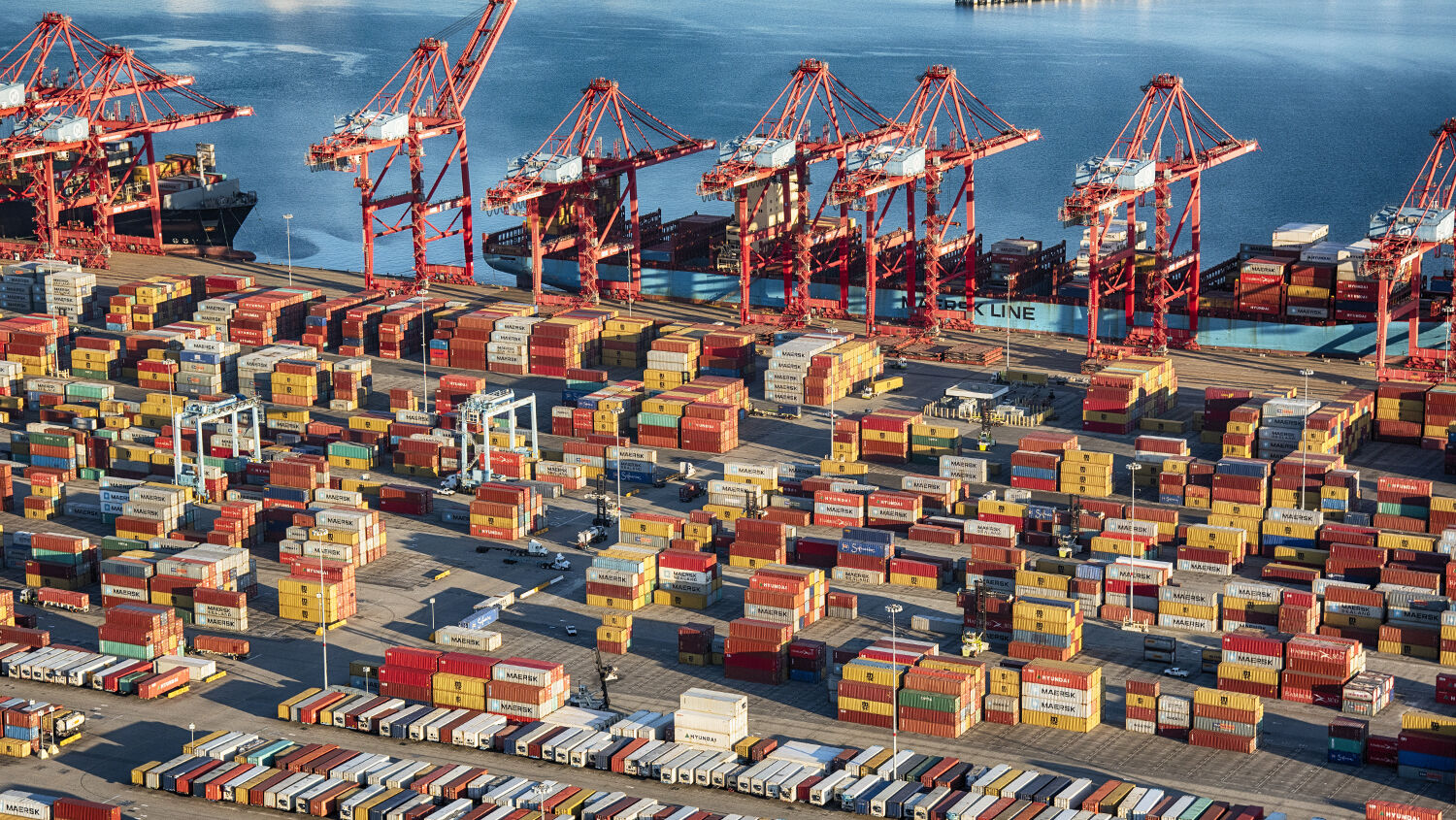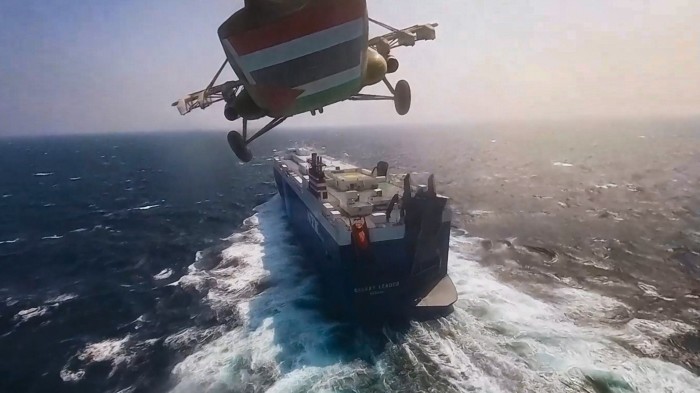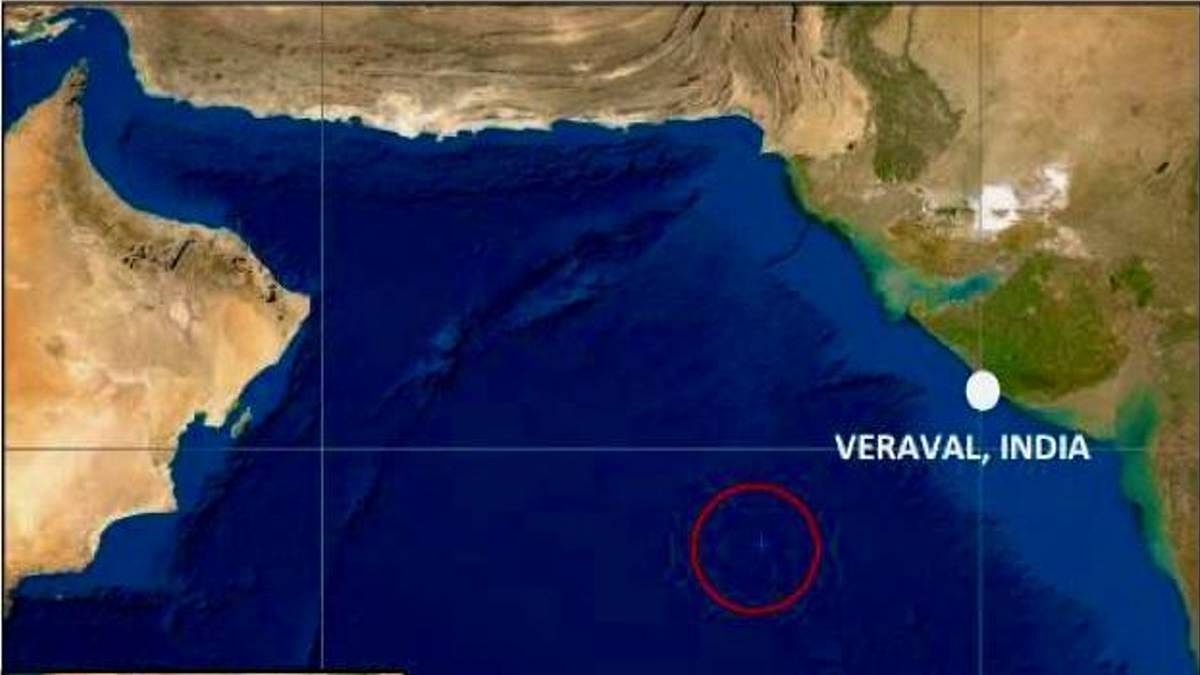Red Sea Crises Leading To Global Trade Catastrophe, $1 Million In Extra Costs And Weeks Of Delays Rising Inflation In turn
The Red Sea is a narrow but critical waterway linking the Mediterranean Sea to the Indian Ocean and has long been a linchpin in global trade dynamics. However, recent events have thrown this crucial artery into chaos, resulting in substantial challenges for international commerce. With $1 million in extra costs and weeks of delays, the Red Sea crisis is now upending global trade as we know it, reshaping maritime transportation and deep implications for global supply chains, including India.

$1 million in additional expenses and weeks of delays are the ramifications being faced due to the Red Sea crisis, which is reshaping global trade dynamics.
The Red Sea is a vital link connecting the Mediterranean Sea and the Indian Ocean, holding massive significance in global commerce.
This narrow channel is central to maritime transportation, particularly for ships voyaging between Asia and Europe. At the heart of this route lies the Suez Canal, a crucial facilitator of the swift movement of various goods, including oil and liquefied natural gas (LNG).
Approximately 40% of trade between Asia and Europe, including a notable portion of commodities like oil, diesel, palm oil, and grain, crosses this region, making it an indispensable hub for the worldwide economy.
The strategic importance of the Red Sea route has soared with the discovery of oil and gas in West Asia; annually, approximately 17,000 vessels navigate through the Suez Canal, constituting 10% of global trade.

The Red Sea serves as a passage for nearly 15% of global seaborne trade, including significant proportions such as 8% of the global grain trade, 12% of seaborne-traded oil, and 8% of the world’s liquefied natural gas trade.
The broader expanse between Egypt and India hosts three maritime chokepoints – the Strait of Hormuz, linking the Persian Gulf to the Indian Ocean; the Strait of Bab-el-Mandeb, joining the Red Sea with the Indian Ocean; and the Suez Canal, connecting the Red Sea with the Mediterranean Sea.
These chokepoints are dangerous as cargo vessels are susceptible to attacks and blockades while crossing these narrow channels.
Major ports along the Red Sea, including those in Egypt, Saudi Arabia, and Yemen, play a significant role in facilitating efficient cargo movement, acting as crucial nodes for loading and unloading goods and ensuring the smooth flow of international trade.
Approximately 30% of global container traffic and over 1 million barrels of crude oil per day typically pass through the Suez Canal. Despite being strategically positioned as a central conduit for international shipping and trade, the Red Sea is not safeguarded to transform into a critical maritime chokepoint under specific circumstances.

The Cost Of Attacks
Attacks on container vessels in the Red Sea have caused significant disruption to one of the world’s most crucial trade routes for several weeks.
This is the case as in late November, Iran-backed Houthi militants intensified their assaults on ships in retaliation for Israel’s conflict with Hamas.
On March 29, 2021, cargo ships lingered in the Red Sea vicinity near the entrance of the Suez Canal. The resultant delays and additional expenses for shipping firms have raised concerns about potential new price hikes for consumers, who are already grappling with prolonged inflation.
Richard Meade, editor-in-chief of shipping publication Lloyds List, noted an extensive departure of larger container ships from the Red Sea and the adjacent Suez Canal. These vessels, responsible for transporting various goods from Asian manufacturers to European customers, have opted for longer routes to bypass the troubled area.
This mass departure holds significance as the Suez Canal, linking the Red Sea to the Mediterranean Sea, facilitates 10-15% of global trade, including oil exports, and accommodates 30% of global container shipping volumes as mentioned above.
However, analysts state that the overall impact on shipping costs and supply chains is less severe than during the peak of the pandemic.
Nonetheless, the ongoing crisis has resulted in repercussions, such as Tesla halting some production due to delays in car parts delivery to Germany, and Ikea cautioning about potential product shortages.

The Red Sea Significance, India
For India, the Red Sea route alongside the Persian Gulf is crucial for oil security.
India heavily depends on the Red Sea for importing crude oil, liquefied natural gas (LNG), and engaging in trade with West Asia, Africa, and Europe.
Secondly, trade, the Red Sea witnesses a significant flow of cargo vessels annually, connecting the Indian Ocean to the Mediterranean Sea. Approximately 80% of India’s exports to Europe are routed through the Red Sea region.
The Massive Delays
Peter Sand, the chief analyst at Xeneta, an ocean and air freight data firm, approximates that approximately 90% of the typical container ship capacity passing through the Red Sea and Suez Canal has been redirected around the southern tip of Africa.
As a result, nearly one-quarter of all bulk carriers and tankers have also opted for the same diversion around South Africa’s Cape of Good Hope. This rerouting has resulted in additional travel time, with container ships experiencing up to two weeks of delay in an East-to-West journey, while bulk carriers and tankers face an extension of up to 18 days.
Evidence suggests that shipping clients are now opting for air transport over sea freight due to the disruptions. According to Sand, certain fashion companies and apparel sellers in Europe have chosen to airlift some of their clothing lines instead of relying on sea transport, resulting in a significant surge in costs, which can be ten to twenty times higher than sea transport.
Data from Xeneta indicates a notable increase in the volume of cargo being flown from Vietnam, a major manufacturing hub for clothing, to northern Europe over the past three weeks.

Rising Costs
Costs have surged by an additional $1 million per ship due to the elongated shipping routes, resulting in escalated expenditures on fuel, insurance, charter fees, and wage bills.
According to Sand from Xeneta, companies such as Maersk and Hapag-Lloyd are bearing the brunt of this expense, with an estimated extra cost of $1 million per vessel for a round trip around the southern tip of Africa, predominantly attributed to heightened fuel costs.
Therefore, carriers have raised freight rates for transporting goods on their vessels and have imposed emergency surcharges.
This week, the global shipping costs per a standard 40-foot container have soared to $3,786, marking a staggering 90% increase from the same period last year, as reported by the Drewry World Container Index.
For a similar-sized container voyage from Shanghai, China, to Rotterdam, the Netherlands, the cost has surged by 158% compared to a year ago, reaching $4,426.
What About Inflation
According to Sand from Xeneta, many retailers are likely to transfer the increased freight expenses to consumers, especially those operating on narrow profit margins.
However, container shipping remains highly cost-effective, as numerous goods can be accommodated within a single shipping container as even with an additional few thousand dollars per container, the cost can be distributed across numerous products, resulting in only a marginal increase in the retail price per item.
The Organisation for Economic Co-operation and Development (OECD) stated on Monday that if freight costs remain elevated, consumer price inflation across its 38 member countries could climb by 0.4 percentage points within approximately a year.
The inflation outlook may darken if the conflict between Israel and Hamas extends to other regional countries, endangering global energy supply, or if oil prices—largely unaffected since the Houthis escalated their attacks—begin to rise.
)
While fewer oil tankers have diverted away from the Red Sea compared to container ships, which are more closely associated with Western countries allied with Israel, this trend might be shifting.
Meade from Lloyds List observed a 40% decline in the number of crude oil tankers passing through the Bab-el-Mandeb strait last week compared to the previous week.
He says, “It is perceived as a risk, and ship owners lack confidence in its safety, regardless of the advertised nationality”.
The Last Bit: There is little doubt that if the tensions in the Red Sea were to remain the same or were to escalate, it would lead to more shipping companies to either rerouting or stop using the corridor altogether; whichever way it goes, the repercussions for the global economy would be severe.




